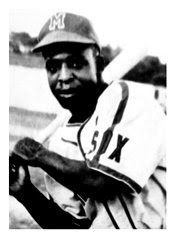The City Council's park and environment committee discussed (sort of) two ideas to make Memphis a greener city this week.
The first was to put recycling bins around the city, much like public garbage cans.
The second was to ban plastic bags at events on public property — festivals, 5Ks, and parades — that require council approval. That proposed ordinance would also require the host groups to provide recycling bins.
I wrote about the first proposal — which I think is a great idea — in this week's Flyer, but only touched on the second because the committee did not have a full discussion on it this week.
Parks and environment committee chair Jim Strickland proposed the second initiative.
"Why do we want to reduce the use of plastic bags? I think they cause a lot of blight in certain areas of the city," Strickland told me in a phone interview. "You get them flying through the air and they get caught up against fences.
"I'm not fooling myself that it will have a huge effect, but I hope it would do some good."
I asked if Strickland, who doesn't consider himself "super-green," had any plans to for a wider plastic bag ban. He said he didn't know if the council had authority to do something like that.
"I'd like to see how it works on a small basis," he said. "That would be such a major change for the stores. It would require a huge amount of research and an effort to get people to buy into it, and I don't think we're there yet."
Strickland confessed that he was actually more excited about the second part of his proposal: having recycling bins at festivals. (The public event plastic bag ban was actually proposed a few years ago by former councilman Dedrick Brittenum.)
"You go to an event, you have a can of Coke or a bottle of water, and they're just thrown in the garbage," he said. "If you offer people the opportunity to recycle, I think a good percentage will."
But after the general discussion about recycling bins in public places, Strickland held his proposed ordinance.
Public works director Dwan Gilliom, along with Andy Ashford, head of the city's recycling program, were concerned about contamination in public recycling bins.
"If you put a dumpster out, it looks like it's for trash," Ashford said. "Even if it says it's for recycling, people are going to put their trash in it."
Gilliom said that while he was in Denver (
one of the cities that pushed Barbara Swearengen Ware to propose having recycling containers in public places) he saw volunteers manning recycling bins and making sure no one contaminated them with regular trash. And that host organizations for festivals and 5Ks might need to have volunteers doing that to make the recyling bins work.
Personally, I think this is an educating-the-people thing. Two years ago, I went to the Germantown Festival —
where I witnessed the awesome Grand Weenie Race — and they had special recycling containers for water and soda bottles.
They didn't have any volunteers manning them, but they were clear plastic bags hanging off a metal base and were clearly marked "plastic recycling."
I didn't take a scientific inventory or anything, but if memory serves, they were filled with plastic drink bottles and not food or other trash. I think it helped that the mouth of the bin was just big enough for a drink bottle, but my point is, this can be done. It's not rocket science.
And, really, so what if some of the bins get contaminated? Then I guess that load of trash will have to be thrown away, just like it would be if there were no recycling bins at all.
As long as most of the bins don't get contaminated, the city (and the environment) benefits.
The only way people are going to learn about public recycling bins is to expose them to public recycling bins.
"This is something Memphis may be a little behind some cities on and I think it's time to catch up," Strickland said.













